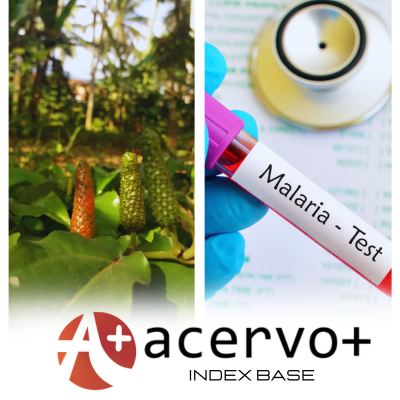Potencial Terapêutico das Plantas Medicinais Amazônicas no Tratamento da Malária
##plugins.themes.bootstrap3.article.main##
Resumo
Objetivo: Explorar e sintetizar as evidências disponíveis sobre o uso de plantas medicinais amazônicas no tratamento da malária, destacando seus mecanismos de ação, desafios e limitações. Revisão Bibliográfica: A revisão revelou que plantas como Cinchona spp., Artemisia annua, Carapa guianensis, Copaifera spp. e Quassia amara possuem compostos bioativos que inibem a replicação do Plasmodium spp., modulam a resposta imunológica do hospedeiro e têm propriedades antioxidantes. Os principais desafios incluem a resistência do parasita aos tratamentos, a padronização das doses dos extratos de plantas e as interações medicamentosas. A integração do conhecimento tradicional com a pesquisa científica pode levar ao desenvolvimento de novos tratamentos antimaláricos eficazes. Considerações finais: As plantas medicinais amazônicas mostram um grande potencial para o tratamento da malária, porém, mais estudos são necessários para garantir a segurança e a eficácia desses tratamentos. As principais limitações incluem a resistência do parasita aos medicamentos e a necessidade de padronizar os extratos de plantas. Além disso, há dificuldades logísticas na coleta e conservação das plantas. Integrar o conhecimento tradicional com a pesquisa científica pode ser a chave para desenvolver novos tratamentos antimaláricos eficazes.
##plugins.themes.bootstrap3.article.details##
Copyright © | Todos os direitos reservados.
A revista detém os direitos autorais exclusivos de publicação deste artigo nos termos da lei 9610/98.
Reprodução parcial
É livre o uso de partes do texto, figuras e questionário do artigo, sendo obrigatória a citação dos autores e revista.
Reprodução total
É expressamente proibida, devendo ser autorizada pela revista.
Referências
2. BAPTISTA DR. Plantas medicinais da Amazônia. Belém: Editora Amazônia, 2002.
3. BRASIL. Ministério da Saúde. Malária. Available at: https://www.gov.br/saude/pt-br/assuntos/malaria. Accessed on: February 1, 2024.
4. CÁMARA-LERET R, BASCOMPTE J. Language extinction triggers the loss of unique medicinal knowledge. Proceedings of the National Academy of Sciences, 2021; 118(24): e2103683118.
5. FERREIRA JFS, et al. Flavonoids from Artemisia annua L. as antioxidants and their potential synergism with artemisinin against malaria and cancer. Molecules, 2010; 15(5): 3135-3170.
6. GINSBURG H, et al. Quinoline-Containing Compounds: Mechanisms of Antimalarial Action and Resistance. International Journal for Parasitology, 2002; 32(13): 1527-1536.
7. GÓMEZ LM, et al. Quinoline Antimalarials: Mechanisms of Action and Resistance. International Journal for Parasitology, 2016; 46(13): 765-773.
8. HERNÁNDEZ JE. The Peruvian Bark: The Cinchona Rediscovery and the Jesuits' Contribution to 18th Century Botanical Science. Journal of Ethnopharmacology, 1997; 58(1): 1-20.
9. KRISHNA S, et al. Artemisinins: Their Growing Importance in Medicine. Trends in Pharmacological Sciences, 2004; 25(11): 511-516.
10. LEONTI M. The future is written: Impact of scripts on the cognition, selection, knowledge and transmission of medicinal plant use. Journal of Ethnopharmacology, 2011; 134(3): 542-555.
11. MOURA ACA, et al. Antimalarial Activity of Compounds and Extracts from Carapa guianensis Aublet (Meliaceae). Parasitology Research, 2011; 108(6): 1551-1557.
12. OLIVEIRA AB, et al. Plant-derived antimalarial agents: new leads and efficient phythomedicines. Part II. Non-alkaloidal natural products. Molecules, 2002; 7(5): 303-333.
13. OLIVEIRA AB, et al. Plant-derived antimalarial agents: new leads and efficient phythomedicines. Part II. Non-alkaloidal natural products. Molecules, 2009; 14(9): 303-333.
14. PORTO AS, et al. Epidemiologia da malária na Amazônia: desafios e perspectivas. Revista de Saúde Pública, 1989; 23(3): 189-198.
15. SANTOS AO, et al. Antimicrobial activity of Brazilian copaiba oils obtained from different species of the Copaifera genus. Memórias do Instituto Oswaldo Cruz, 2008; 103(3): 277-281.
16. SANTOS AO, et al. Copaiba oil: an alternative to development of new drugs against leishmaniasis. Evidence-Based Complementary and Alternative Medicine, 2008; 5(4): 409-411.
17. SHARMA N. Biopiracy: securing indigenous traditional knowledge and cultural rights. Biodiversity and Conservation, 2016; 25(13): 2633-2647.
18. SILVA JÚNIOR MF, et al. Anti-inflammatory and Analgesic Activities of Carapa guianensis Aublet. Brazilian Journal of Pharmacognosy, 2013; 23(3): 497-505.
19. SILVA JÚNIOR OC, et al. Evaluation of the anti-inflammatory, analgesic, and healing properties of Copaifera langsdorffii Desf. and Copaifera reticulata Ducke oleoresins. Evidence-Based Complementary and Alternative Medicine, 2012; 2012: 915-923.
20. SIMONSEN HT, et al. Structure-activity relationship of antileishmanial and antimalarial quassinoids. Journal of Natural Products, 2001; 64(9): 1318-1322.
21. SOUZA JG, BARCELOS DF. A malária na região Amazônica: aspectos epidemiológicos e terapêuticos. Acta Amazônica, 2012; 42(4): 589-598.
22. SOUZA MA, et al. Repellent and Insecticidal Activities of Carapa guianensis Seed Oil against Anopheles spp. Parasitology Research, 2012; 111(3): 1195-1201.
23. TARNING J. Treatment of Malaria in Pregnancy. New England Journal of Medicine, 2016; 374(10): 981-982.
24. TAVARES JF, et al. Review of the Chemical Constituents and Biological Activities of Plants Belonging to the Genus Carapa. Brazilian Journal of Pharmacognosy, 2011; 21(2): 216-230.
25. TU Y. Artemisinin-A Gift from Traditional Chinese Medicine to the World (Nobel Lecture). Angewandte Chemie International Edition, 2016; 55(35): 10210-10226.
26. VALE N, et al. Primaquine Revisited Six Decades after its Discovery. European Journal of Medicinal Chemistry, 2009; 44(3): 937-953.
27. VEIGA JUNIOR VF, et al. Chemical constituents and biological activities of Copaifera L. oleoresins: new data and a review. Journal of Ethnopharmacology, 2005; 102(1): 51-54.
28. VEIGA JUNIOR VF, PINTO AC. The copaifera oleoresins: Research, development, and industrial applications. Journal of Ethnopharmacology, 2002; 80(1): 31-44.
29. WHITE NJ. Antimalarial drug resistance and combination chemotherapy. Philosophical Transactions of the Royal Society B: Biological Sciences, 2015; 370(1670): 20140335.
30. WHITE NJ. Antimalarial Drug Resistance. Journal of Clinical Investigation, 2013; 113(8): 1084-1092.
31. WILLCOX ML, BODEKER G. Traditional herbal medicines for malaria. BMJ, 2004; 329(7475): 1156-1159.
32. WRIGHT CW. Plant-derived antimalarial agents: new leads and efficient phythomedicines. Phytochemistry Reviews, 2005; 4(1): 55-61.

